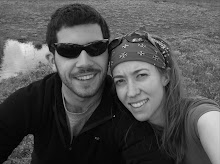What a wild week. Jess and I came back from Chinandega on Friday. We were up there for an entire week of HIV/AIDS training. Chinandega has the highest rate of infection of HIV in Nicaragua. The first case of HIV in Nicaragua was documented in 1987 and since then only 3500 have been reported. However, the rate of infection throughout the 90’s and early 2000’s hovered around 2 or 3 per 1000 people. It shot up in 2005 and 2006. The 2007 numbers collected show an infection rate of 14 per 1000. Clearly, this is becoming a serious problem in Nicaragua, just like the rest of the world.
Some attribute this drastic increase to transient workers traveling to Honduras and Costa Rica seasonally. A fairly large prostitution business has sprung up on Nicaragua’s two borders, as well. To add to the situation, fidelity is a seldom practiced characteristic here. While men living with HIV still outnumber women living with HIV (2.3:1) the demographic group with the highest rate of infection right now are “amas de casa,” or housewives. The bottom line is this is a growing emergency in Nicaragua and the men of the country need to be informed of their role in the spread of HIV. I hope to focus a good amount of time working with men, spreading knowledge about sexually transmitted diseases, and promoting abstinence and fidelity in relationships.
The brighter side of the fight against HIV in Nicaragua is that the any efforts to combat the spread of HIV are readily accepted by the institutional powers. There are a ton of NGO’s from the US and Europe just pouring funding into Nicaragua to address the issue. Additionally, MINSA (The National Health Department) has made the HIV rapid test (results in 20 mins) available for free in the majority of health centers across the country. Even more, drugs that might cost an HIV positive person in the US thousands of dollars monthly are provided free in Nicaragua. While Jess and I don’t plan on spending all of our time on HIV/AIDS work, it’s encouraging to know that we will be supported in whatever projects we start.
On to other news: Thank you all so much for reading our blog and responding so regularly! Unfortunately, Blogger doesn’t allow us to write back to all of you when you ask us questions. We’re not ignoring you! Please feel free to email us directly (emails can be found by clicking our names on the right) if you’d like a specific question answered, and we’ll be sure to write back! We have noticed a bunch of questions about money, how we get paid, etc. I’ll try and write a little bit about that:
For our first month in Nicaragua we received a weekly stipend in Nicaraguan currency (the Cordoba). Very clandestine like, we got about 250 cords a week in cash in an envelope. So you have an idea of how much that is in US dollars, the currently conversion rate is hovering around 19 cordobas for every dollar. The way our money breaks down is about 35 cords daily for what Peace Corps calls “walk around” money. Because we are living with host families, this amount is dismally low, as we aren’t paying for food or lodging. On top of our walk around money we have money added in for travel and meals, as we are leaving our training towns at least twice a week. If you do the math it’s easy to see Peace Corps keeps us on a pretty tight budget, but hey, we are volunteering.
At the start of our second month we received bank accounts in a local bank. Peace Corps automatically deposits our money into the account weekly. We have access to it by debit card, which we can even use in a few stores and restaurants. The 35 cords a day never changes, but the net total changes based on our many times we’re out of our site during a given week, how many meals we’ll need to pay for, etc. All in all, it’s nearly impossible to save up any more than 100 cords in the account. Honestly though, that’s ok by me. The International Peace Corps budget is so miniscule, I’m still amazed at how much bang they get for their buck.
Once we’re sworn in we’ll receive a much larger bi-monthly stipend that will cover housing, food, transportation, extras, etc. Jess and I are in a great spot because married couples are treated like two separate volunteers, so we’ll be receiving two full paychecks and only paying for one apartment. Once we get to this phase we’re assuming we’ll be able to save a little bit of dough for traveling around Nicaragua, maybe splurging every once in a while for some mozzarella cheese or extra virgin olive oil.
OK, that’s how we do it down here in Nicaragua. I hope that fills in the gaps for those of you who’ve been asking. Let’s see if we can post those pictures from the last post:
Look Mom! We´re swimming in a South American River! Not a leech in site!
Jess at the beach in Chinandega.

Just Matt and a few cows in this field. Plenty of space to practice his Thai Chi. Or was that Chai Tea...

Here´s a view from the top of Volcan Masaya. It was truly incredible. Matt´s first volcano, but Jess is a veteran of these kinds of things.

 So this week is Semana Santa in
So this week is Semana Santa in 


















